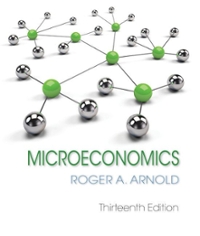Question
Read Chapters 18 and 19 of Macroeconomics: Private and Public Choice. Gwartney, J. A., Stroup, R. L., Sobel, R. L., & Macpherson, D. A. (2018).
Read Chapters 18 and 19 of Macroeconomics: Private and Public Choice.
Gwartney, J. A., Stroup, R. L., Sobel, R. L., & Macpherson, D. A. (2018). Macroeconomics: Private and public choice (16th ed.). Retrieved from https://www.cengage.com
In Chapter 9 you were introduced to the terms trade deficit and trade surplus.
In Chapter 19 your view of imports and exports was expanded to include the balance of payments. As part of the balance of payment calculation, trade deficit or trade surplus is called balance on goods and services (p. 396, exhibit 5, line 7).
Business news commonly use the term trade deficit to discuss the U.S. economy rather than your textbook's favored term, balance on goods and services. The trade deficit or trade surplus (p. 396, exhibit 5, line 7) has the biggest impact on the current account.
Politicians often warn us about the problems of the US having a trade deficit. Cordially debate whether the US should be concerned about our trade deficit. first discuss how the balance of payments can influence exchange rates and purchasing power. Then take a position either for or against trade deficits. In your position, address the pros and cons of the U.S. trade deficits. There are many supplemental resources available to assist you with this debate.
Step by Step Solution
There are 3 Steps involved in it
Step: 1

Get Instant Access to Expert-Tailored Solutions
See step-by-step solutions with expert insights and AI powered tools for academic success
Step: 2

Step: 3

Ace Your Homework with AI
Get the answers you need in no time with our AI-driven, step-by-step assistance
Get Started


